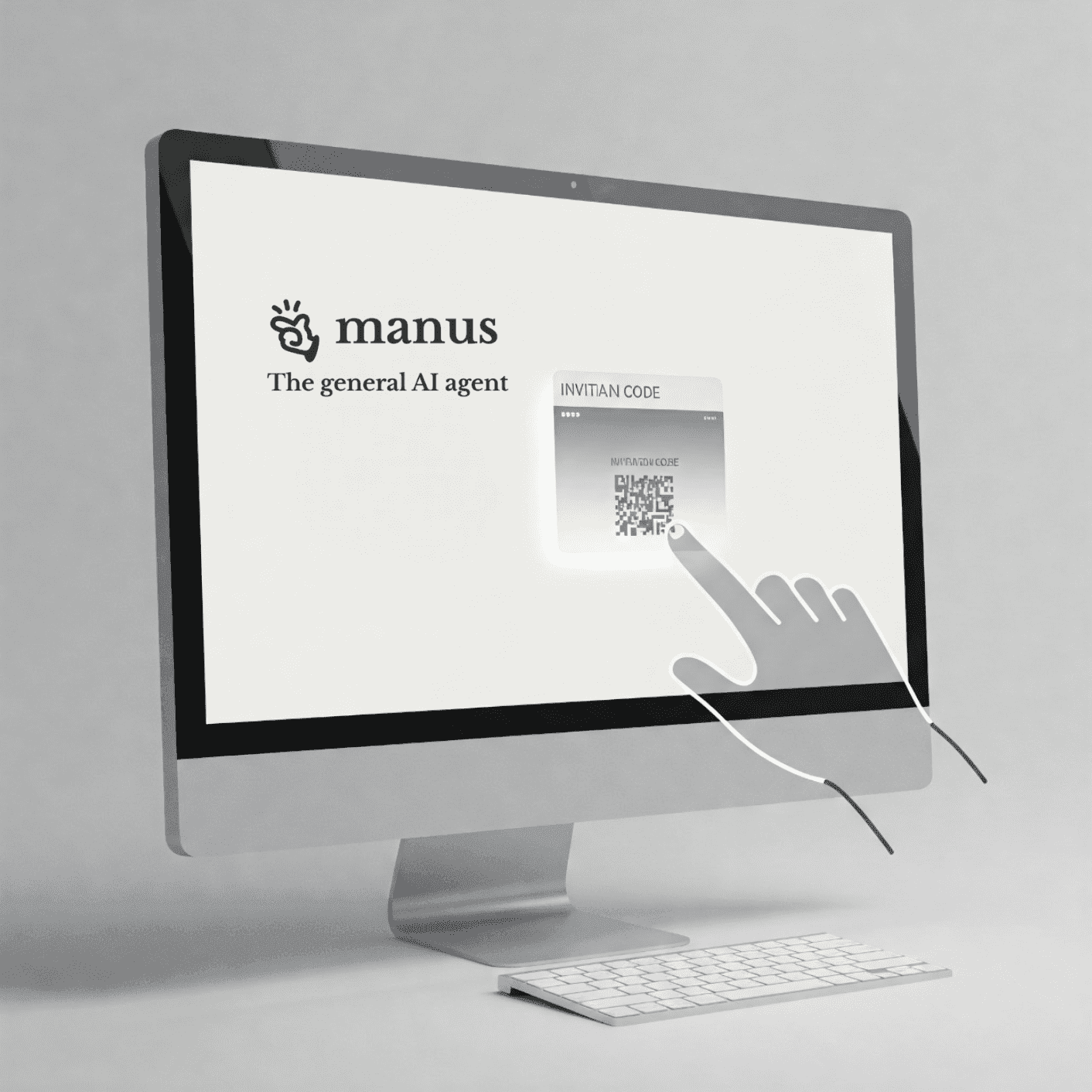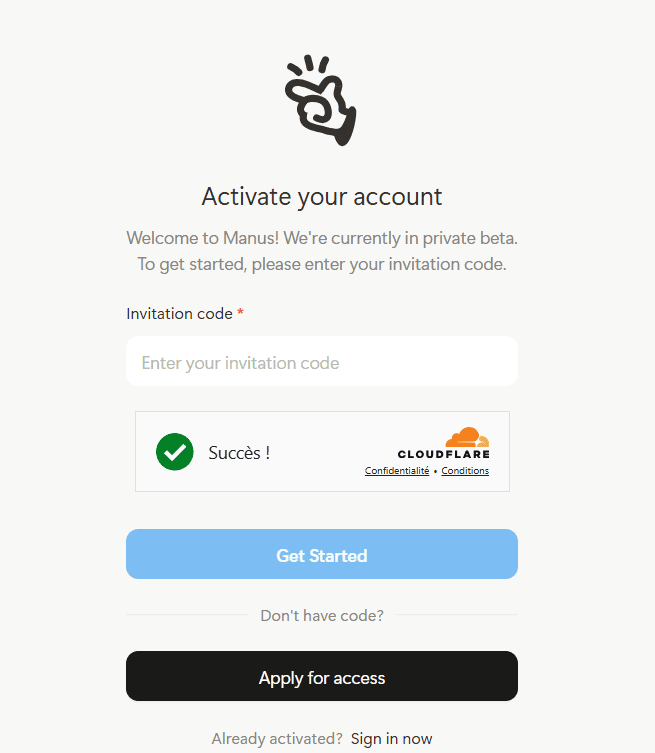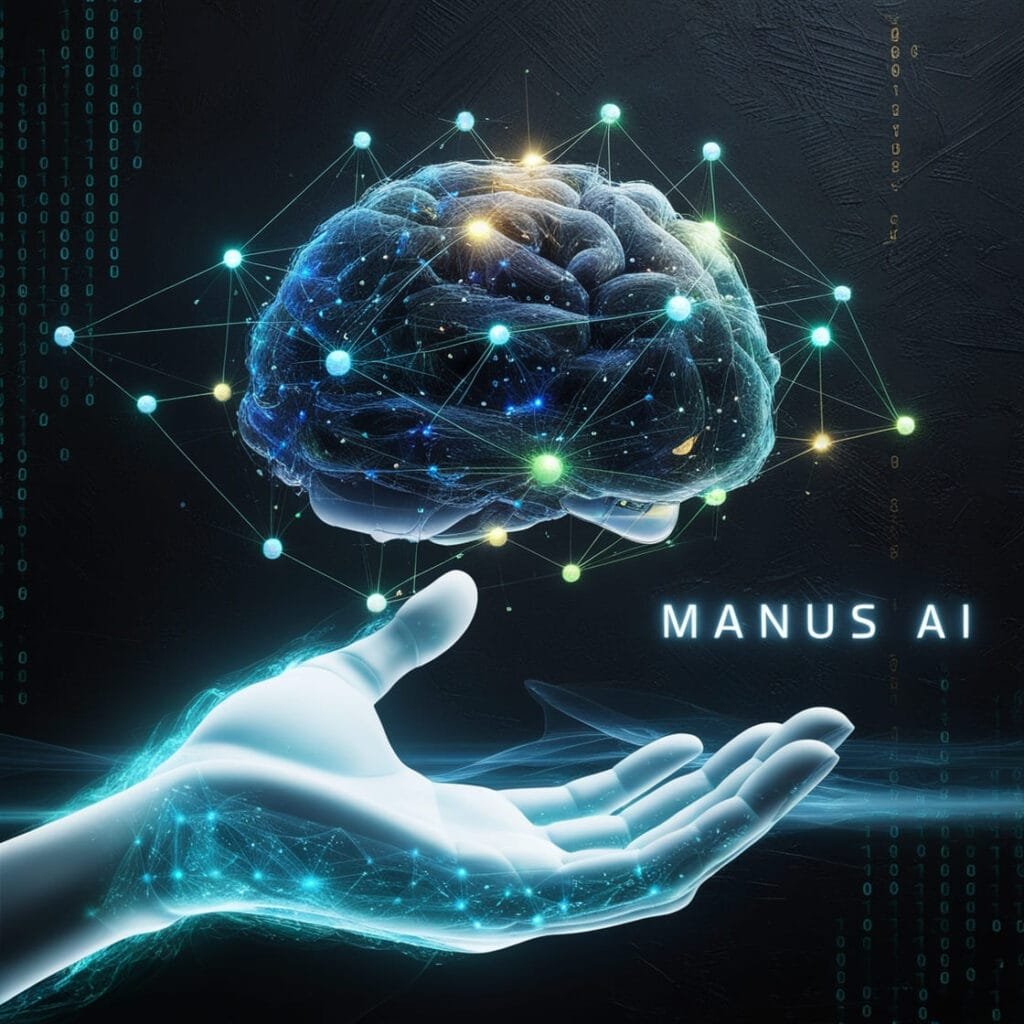
Manus AI: An In-Depth Look at China’s Autonomous AI Agent
The Chinese startup Monica has introduced Manus AI, an innovative AI agent making waves in the tech world. Claimed to be one of the first fully autonomous AI agents, Manus AI distinguishes itself from traditional AI assistants by its ability to independently plan and execute tasks, potentially revolutionizing the field of artificial intelligence. This article provides a comprehensive overview of Manus AI, exploring its features, capabilities, and potential impact, while also addressing concerns and limitations surrounding this emerging technology. It’s being hailed as a significant development that could potentially surpass the capabilities of AI agents from industry giants like OpenAI and Google.
What is Manus AI?
Developed by Monica, a Chinese startup, Manus AI is an autonomous AI agent capable of performing multi-step tasks with minimal human input. Unlike conventional AI assistants that require continuous prompts, Manus AI can independently plan, execute, and refine tasks. This groundbreaking technology has been described as “the next paradigm of human-machine collaboration” and a potential glimpse into Artificial General Intelligence (AGI). The name “Manus” originates from the Latin phrase “mens et manus,” meaning “mind and hand,” which aptly reflects the AI’s ability to not only process information but also take action. This sets it apart from most AI models that primarily offer suggestions.
Manus AI is designed to function as a digital employee, executing tasks independently with minimal prompts. Some experts believe that Manus AI could be China’s second “DeepSeek moment,” similar to the impact made by the Deepseek-R1 AI model released in January 2025.
Accessing Manus AI

Despite its recent launch, Manus AI has generated significant interest and demand. However, access to this innovative AI agent is currently restricted to an invitation-only beta phase due to limited server capacity. This exclusivity has led to a surge in demand for invite codes, with individuals turning to platforms like Goofish (a Chinese reseller site also known as Xianyu) and eBay to obtain access.
On Goofish, invite codes are being sold at various prices, ranging from a few cents to thousands of dollars. Even on eBay, an email and password combination granting access to Manus AI has been listed for $1,000, highlighting the high level of interest in this technology. If you’re interested in trying Manus AI, you can apply for access by visiting the Manus AI website and joining the waitlist.
How Does Manus AI Work?
Manus AI functions as a multi-agent system powered by several distinct models4. It leverages Large Language Models (LLMs), multi-modal processing, and tool integration to deliver seamless results6. The system is built on Anthropic’s Claude 3.5 Sonnet, a nine-month-old AI model, and fine-tuned versions of Alibaba’s Qwen models7. The team behind Manus AI is also testing an upgrade to Claude 3.7 to further enhance its performance7.
One of the key features of Manus AI is its ability to work asynchronously in the cloud4. This means users can assign tasks and walk away, allowing Manus to work in the background without requiring constant interaction4. Users can close their laptops, and Manus will notify them upon completing the task4. The AI follows a cyclical process to execute tasks:
- Analyze events: The process begins with a comprehensive analysis of events. This involves deeply understanding the user’s request, deciphering the user’s intent and specific instructions. Furthermore, Manus AI assesses the current state of the task itself. This includes examining any existing data, previous steps taken, and the overall context within which the task is being performed. This initial analysis phase is crucial for setting the stage for effective task execution, ensuring that Manus AI has a clear and complete understanding of what needs to be accomplished and the starting point.
- Select tools: Based on the thorough analysis of events, Manus AI proceeds to select the most appropriate tools from its extensive repertoire. This is not simply a random selection; it’s a strategic decision-making process. Manus AI evaluates various available tools, considering factors such as the nature of the task, the type of data involved, the desired level of accuracy, efficiency requirements, and resource availability. The goal is to identify the optimal tool or combination of tools that will most effectively and efficiently address the specific requirements identified in the ‘Analyze events’ phase, maximizing the chances of a successful and high-quality outcome.
- Apply selected tools: Once the optimal tools have been selected, Manus AI moves to the execution phase, applying these tools to perform the actual task. This step involves the active utilization of the chosen algorithms, models, APIs, or processes. Depending on the task, this might include data processing, computation, information retrieval, content generation, interaction with external systems, or a combination of these actions. This is the core operational stage where Manus AI actively works towards fulfilling the user’s request, leveraging its selected tools to manipulate data, generate outputs, and drive the task forward.
- Monitor progress: Throughout the ‘Apply selected tools’ phase, Manus AI continuously monitors the progress of the task execution. This is not a passive process; it involves actively tracking key metrics, indicators, and milestones to ensure that the task is proceeding as expected and is on track to achieve the desired outcome. This monitoring step allows Manus AI to detect any potential issues, deviations, or errors early in the process. By actively keeping track of the task’s trajectory, Manus AI can ensure it remains aligned with the user’s goals and can make necessary adjustments if needed to stay on course.
- Report results: The final step in the cyclical process is to report the results to the user upon task completion. This is more than just a simple notification of completion; it’s about providing a comprehensive and informative summary of the task outcome. Manus AI prepares a report that details the results achieved, highlighting key findings, outputs generated, and any relevant insights gained during the process. This report serves to inform the user about the success of the task, provides the deliverables or information requested, and effectively closes the loop, ensuring the user is fully informed and can utilize the outcomes of Manus AI’s work.
Core Architectural Features
Manus AI possesses several core architectural features that enable its autonomous capabilities:
| Feature | Description |
| Linux sandbox environment | Manus operates within a controlled execution space, where it can install software, run scripts, and manipulate files5. |
| Shell and command-line execution | The AI can execute shell commands, manage processes, and automate system tasks5. |
| Integrated web browser control | Manus can navigate websites, extract data, interact with web elements, and even execute JavaScript within a browser console5. |
| File system management | It can read, write, and organize files, making it useful for handling document-based workflows5. |
| Deployment capabilities | Manus can deploy applications, including setting up websites and hosting services on public URLs5. |
Capabilities and Use Cases
Manus AI is a next-generation AI assistant 6 designed to handle a wide range of tasks in both professional and personal contexts8. Its capabilities include:
- Information retrieval and fact-checking: Manus can access and process information from online sources, ensuring the accuracy of its outputs5. This is particularly useful for tasks like travel planning, where Manus can gather information about destinations, flights, and accommodation options, while also verifying the accuracy of the information it finds8. It can also be applied to financial analysis, where Manus can retrieve and cross-reference data from various sources to provide accurate and up-to-date insights.
- Data processing and visualization: Manus can analyze data, generate reports, and create interactive dashboards to present information in a clear and concise manner5. This capability can be used to create comprehensive reports on various topics, such as market research or financial analysis8.
- Code execution and automation: Manus can write, test, and deploy scripts, automating various programming tasks5. This can be beneficial for developers and businesses looking to automate repetitive coding tasks or streamline software development processes.
- Web automation: Manus can interact with web applications, fill forms, and scrape data from websites5. This can be used for tasks like automating online purchases, gathering data for market research, or managing social media accounts.
In addition to the capabilities listed above, Manus AI can also:
- Screen resumes: Manus can analyze resumes, extract key information, and rank candidates based on specific criteria. This can significantly reduce the time and effort required for recruiters to shortlist candidates.
- Research real estate: Manus can research properties based on user-defined criteria, such as location, budget, and school districts. It can then compile a detailed report with recommendations and resources.
These diverse capabilities make Manus AI suitable for a wide range of use cases, including:
- Travel planning: Manus can generate personalized itineraries, taking into account user preferences and budget constraints8.
- Financial analysis: It can analyze stock market data and provide insights into investment opportunities.
- Education: Manus can create interactive courses and educational materials, making complex topics more accessible8.
- Comparative analysis: It can compare different options, such as insurance policies or products, and present the findings in a structured way8.
- Supplier sourcing: Manus can identify suitable suppliers for businesses, automating the process of finding and evaluating potential partners8.
- Market research: It can conduct in-depth research on specific industries, providing valuable insights for businesses8.
- Data extraction: Manus can compile and structure data from large databases, making it easier to analyze and interpret information8.
- E-commerce optimization: It can analyze online store performance and provide actionable insights to improve sales8.
Visualization with Manus Spaces
A unique feature of Manus AI is the “Manus Spaces gallery.” 8 This visualization tool allows users to explore virtual environments or data related to specific tasks. For example, Manus Spaces can visualize quantum computing concepts, stock patterns, or even scientific processes like zinc oxide growth on nickel foam8. This capability enhances the user experience by providing interactive and engaging visualizations of complex data and concepts.
Manus AI and the GAIA Benchmark
Manus AI has garnered attention for its impressive performance in benchmarks, particularly the GAIA benchmark4. This comprehensive AI test, developed by Meta AI, Hugging Face, and the AutoGPT team, evaluates an AI’s ability to reason logically, process multi-modal inputs, use external tools effectively, and automate real-world tasks6. According to data showcased on the Manus website, it has reportedly outperformed OpenAI’s o3-powered Deep Research agent and other top-tier models4. Notably, Manus AI achieved state-of-the-art performance across all three difficulty levels of the GAIA benchmark, surpassing OpenAI’s models9.
| Difficulty Level | Manus AI Score | OpenAI Deep Research Score | Previous SOTA Score |
| Level 1 (basic tasks) | 86.5% | 74.3% | 67.9% |
| Level 2 (intermediate tasks) | 70.1% | 69.1% | 67.4% |
| Level 3 (complex tasks) | 57.7% | 47.6% | 42.3% |
5
These results suggest that Manus AI may be one of the most capable autonomous AI agents currently available5. However, it’s important to remember that real-world performance can differ from controlled testing environments.
Manus AI and Censorship
An interesting aspect of Manus AI is its ability to provide accurate and uncensored responses to sensitive questions. Unlike DeepSeek, which is reportedly programmed to align with the Chinese government’s stance on politically sensitive topics, Manus AI provided comprehensive and factual answers to questions about the 1989 Tiananmen Square crackdown and allegations of human rights abuses in Xinjiang. When asked about its uncensored replies, Manus AI stated that it does not “intentionally censor factual information” and aims to provide “balanced, objective information.” This difference in approach to censorship could have significant implications for how AI agents are developed and used in different parts of the world.
Limitations and Concerns
While Manus AI presents exciting possibilities, it’s important to acknowledge its limitations and address concerns surrounding its development:
- Glitches and inconsistencies: Some users have reported instances where Manus gets stuck in repetitive cycles or struggles with complex decision-making when tasks are not clearly defined5.
- Over-reliance on existing models: Manus heavily integrates Claude Sonnet and Qwen finetunes, raising concerns about whether it truly represents a significant advancement in AI or simply an orchestration of existing technologies5.
- Security and privacy risks: Manus’s ability to execute commands and access external systems has raised questions about its security controls and the potential for unintended vulnerabilities5.
- Limited context window: Despite its autonomy, Manus AI still has limitations on the amount of data it can process at once5.
- Ethical concerns: Researchers have expressed concerns about the development of fully autonomous AI agents, highlighting the potential for catastrophic errors and the need for human oversight.
- Data privacy: As Manus operates in the cloud, there are concerns about the handling of sensitive personal and business data, particularly regarding potential data transfers to China5.
Conclusion

Manus AI represents a significant step towards the development of autonomous AI agents. Its ability to perform complex tasks with minimal human intervention has the potential to revolutionize various industries and aspects of our lives. This technology could significantly impact the future of work, potentially automating tasks currently performed by humans and leading to increased efficiency and productivity. However, this also raises concerns about the potential displacement of human workers and the need for strategies to adapt to a changing job market.
Furthermore, the development of autonomous AI agents like Manus AI raises ethical considerations that need careful attention. Ensuring responsible AI development and usage is crucial to prevent unintended consequences and mitigate potential risks. This includes addressing concerns about bias in AI algorithms, the potential for AI to be used for malicious purposes, and the need for transparency and accountability in AI systems.
The emergence of Manus AI also highlights the need for international collaboration in regulating AI technologies. As AI becomes increasingly powerful and autonomous, it’s essential for countries to work together to establish ethical guidelines and safety standards to ensure that AI benefits humanity as a whole.
While Manus AI shows great promise, it’s crucial to approach this technology with cautious optimism, acknowledging its limitations and addressing the ethical and security concerns surrounding its development. As AI technology continues to evolve, finding the right balance between innovation and responsibility will be essential to ensure that AI agents like Manus benefit society without introducing significant risks. The future of AI is likely to be shaped by ongoing research, development, and collaboration, and Manus AI is a significant player in this evolving landscape.
Sources des citations
1. After DeepSeek, Manus AI comes out of China: What is it and why is it making a buzz?, consulté le mars 12, 2025, https://www.indiatoday.in/technology/features/story/after-deepseek-manus-ai-comes-out-of-china-what-is-it-and-why-is-it-making-a-buzz-2691190-2025-03-09
2. What Is Manus AI?, consulté le mars 12, 2025, https://www.blockchain-council.org/ai/manus-ai/
3. Is Manus AI Available for Public Use?, consulté le mars 12, 2025, https://www.misbar.com/en/qna/2025/03/12/manus-ai-available-public-use
4. China’s Manus AI: A Game-Changer or Just Another Overhyped Agent? – AIwire, consulté le mars 12, 2025, https://www.aiwire.net/2025/03/11/chinas-manus-ai-a-game-changer-or-just-another-overhyped-agent/
5. Manus AI: Features, Architecture, Access, Early Issues & More – DataCamp, consulté le mars 12, 2025, https://www.datacamp.com/blog/manus-ai
6. Manus AI: The Best Autonomous AI Agent Redefining Automation and Productivity, consulté le mars 12, 2025, https://huggingface.co/blog/LLMhacker/manus-ai-best-ai-agent
7. Manus AI takes centre stage in China’s growing AI scene, consulté le mars 12, 2025, https://tribune.com.pk/story/2533840/manus-ai-takes-centre-stage-in-chinas-growing-ai-scene
8. Manus AI: AI Agent Use Cases and Benchmarks | by Tahir | Mar, 2025 | Medium, consulté le mars 12, 2025, https://medium.com/@tahirbalarabe2/manus-ai-ai-agent-use-cases-and-benchmarks-81e07d151c50
9. Manus AI launched in China, challenging GPT and DeepSeek, consulté le mars 12, 2025, https://www.chinadaily.com.cn/a/202503/06/WS67c9ba2fa310c240449d9276.html
10. Manus AI: The Future of Autonomous AI Agents in 2025? | iWeaver AI, consulté le mars 12, 2025, https://www.iweaver.ai/blog/manus-ai-the-future-of-autonomous-ai-agents/



[…] in Enterprise Settings: Enterprises often prioritize performance and reliability, making Manus a suitable choice for high-stakes applications. For instance, financial institutions and healthcare […]
[…] The Model Context Protocol (MCP) represents a significant advancement in how Claude AI interacts with external tools and data sources, effectively extending its functionality beyond traditional parameters. By integrating MCP, Claude can engage with a wider array of applications, enhancing its operational scope to deliver more comprehensive solutions. This development opens the door to multiple possibilities that were previously unattainable through conventional AI frameworks. […]